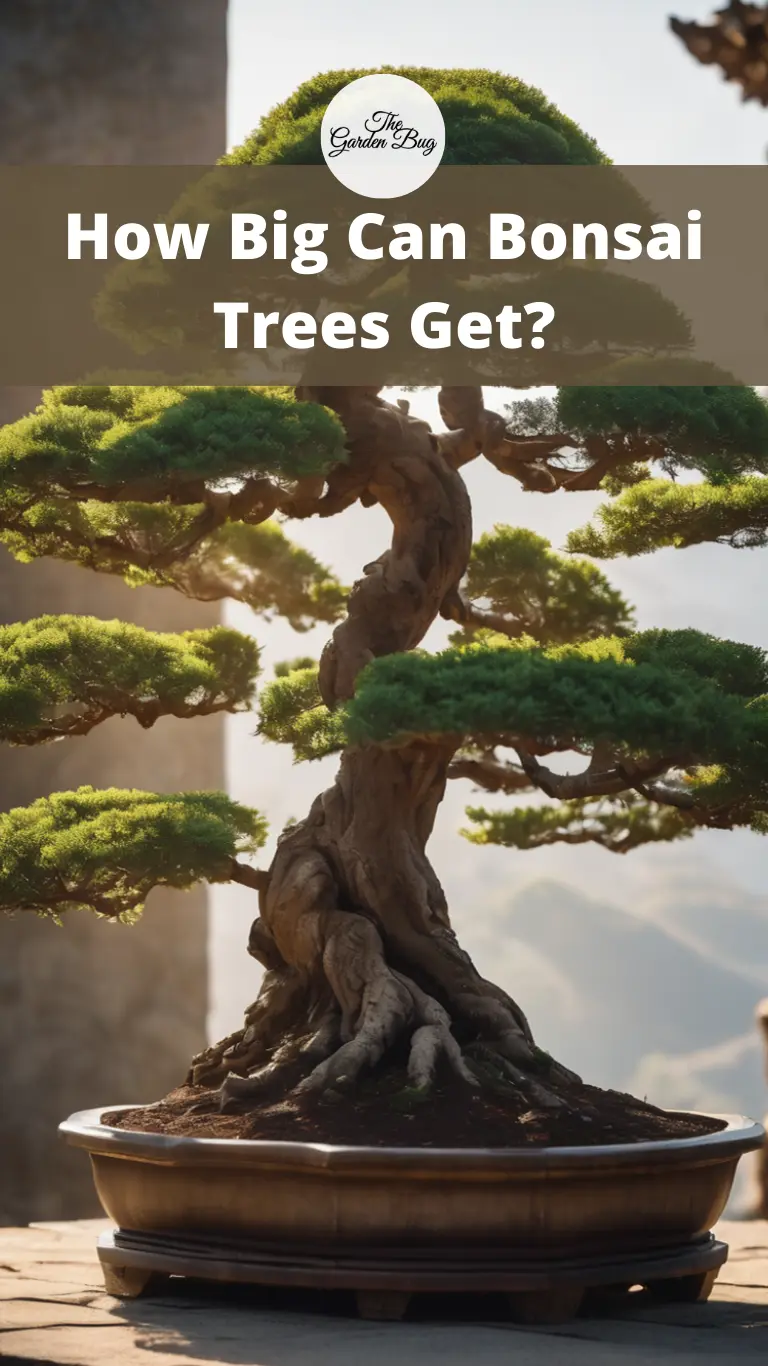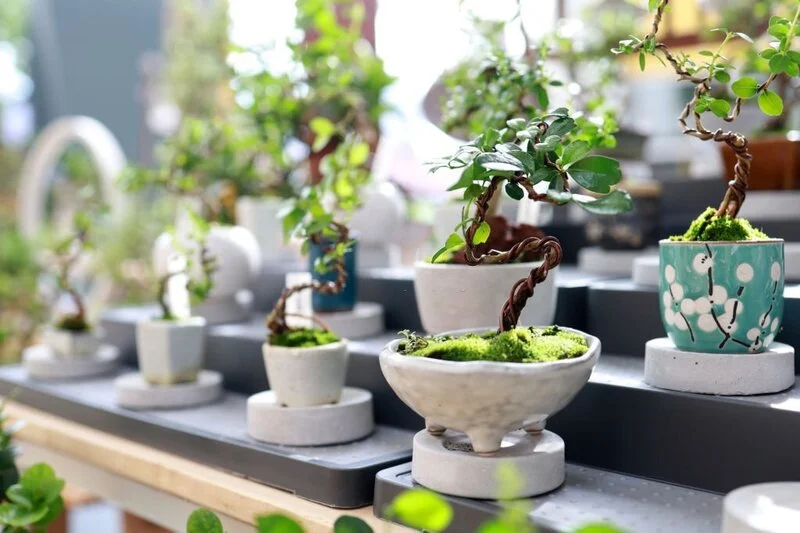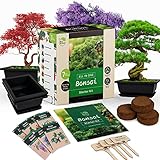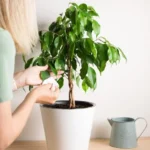Hello there, green thumbs and tree enthusiasts! Today, let’s dive into the intriguing world of miniature giants – the bonsai trees. Whether you’ve seen one of these tiny wonders on a friend’s coffee table or marveled at their charm in a traditional Japanese garden, you’ve probably wondered: “How big can these little trees get?” Grab a cup of tea, and let’s unravel this mystery together.
- SPECIES: The Juniper is a low growing plant, producing lush greenery and small, firm, silvery blue berries atop interesting bark that adapts well to several creative forms of Bonsai bark manipulation.
- SIZE: Your medium bonsai comes in a 8″ rock container.
- AGE: This Green Mound Juniper Bonsai is 5 years old.
- CARE: Outdoor Care – Your order will be carefully wrapped in a custom designed corrugated carton and delivered with detailed care instructions.
- WARRANTY: Your bonsai tree has been grown in a state-of-the-art greenhouse under precisely controlled conditions to achieve optimum health. If for any reason you are not completely satisfied with your tree or with our service, please notify us within 30 days of receipt. We will correct the situation to your satisfaction.
What is a Bonsai Tree?
“Bonsai” might sound exotic, but it’s just a Japanese term that translates to “planted in a container”. This art form blossomed in Japan over a thousand years ago, where it was revered as a symbol of harmony, peace, and balance.
At its core, a bonsai is a tree like any other. What sets it apart is that it’s carefully pruned, shaped, and grown in a pot or tray to keep its size miniature. Through patience, care, and craftsmanship, a bonsai gardener can create a miniature but realistic representation of a full-sized tree, complete with all its twists, turns, and tangles. Amazing, isn’t it?
Factors Influencing the Size of Bonsai Trees
The size of a bonsai tree is not a game of chance; rather, it’s a beautiful dance between nature and nurture. Bonsai trees are like any other tree, and their potential size is initially determined by their species. Some species are naturally smaller, while others can be quite large if allowed to grow unrestricted.
Yet, the most significant factor in determining a bonsai’s size is the nurturing process, which involves careful pruning of roots and branches, wiring to shape the tree, and limiting the size of the container in which the tree grows. The size of the pot not only restricts the spread of the roots but also the nutrients available to the tree.
Average Sizes of Different Bonsai Styles
In the bonsai world, there is a broad spectrum of sizes, from the miniature “mame” style that can comfortably fit in your palm to the “imperial” style that might require several people to move!
The mame bonsai, measuring up to 10 cm (or about 4 inches), is the smallest style. A step up from that is the “shohin” style, ranging from 10 to 20 cm (or 4 to 8 inches). “Komono” bonsai are slightly larger, generally reaching 15 to 30 cm (or 6 to 12 inches).
Medium-sized bonsai, like the “chumono” and “chuhin” styles, usually range from 30 to 60 cm (or 12 to 24 inches), while “dai” or “otsu-bonsai” are large bonsai, typically 76 to 122 cm (or 30 to 48 inches).
Finally, the grand “hachi-uye” and “imperial” bonsai can reach heights of 152 cm (or 60 inches) and above. While these styles maintain the artistic integrity of their smaller counterparts, they certainly command more space!
Remember, the beauty of a bonsai is not determined by its size but by the artistic and aesthetic quality it displays. Whether large or small, each bonsai tree has its unique charm!
- Create a Nurturing Environment: The Realpetaled Bonsai Tree Kit not only provides the opportunity to grow your own bonsai at home but also the chance to nurture and care for something that will fill your own with peace and calm, and stand as a reminder of your patience and love for generations to come!
- Complete Bonsai Starter Kit: This complete bonsai tree starter kit includes everything you need for a rewarding and fun experience, such as 7 x different bonsai tree seeds, 7 x bonsai soil discs, 7 x reusable pots, 7 x plant markers, 3 x bonsai gardening tools, 1 x bonsai scissors, and step-by-step instructions.
- No Experience Required: Our bonsai tree starter kit comes with detailed instructions that are easy to follow and understand, so you can grow a bonsai tree at home, whether you are a beginner, professional or passionate about gardening!
- Beautiful Bonsai Variations: The indoor bonsai tree kit comes with exquisite bonsai tree variations, such as Jacaranda Mimosifolia, Japanese Black Pine, Purple Wisteria, Delonix Regia, Japanese Red Maple, Ficus Microcarpa, and Sophora Japonica.
- Lovely Gift for Plant Lovers: If you are looking for cool gifts for plant lovers, our bonsai starter kit is the way to go! The set makes a nice gardening gift set for men and women on a special occasion, such as a birthday, anniversary, Christmas, holiday, Father’s Day, Mother’s Day and more.
How to Control the Size of Your Bonsai Tree
Controlling the size of your bonsai tree may sound like a challenging task, but with a few simple tips, you can keep your tree in check. The key to controlling the size lies in the careful balance of pruning and repotting.
Pruning is not just about snipping off branches; it’s about shaping the tree and controlling its growth. Regularly prune both the top growth and the roots of your bonsai to maintain its size. However, always remember to leave enough foliage to sustain the tree’s health.
Repotting is another essential aspect. By restricting the size of the pot, you limit the space for root growth, which, in turn, controls the size of the tree. It’s important to repot your bonsai every couple of years or so, pruning the roots back before returning the tree to its pot with fresh soil.
Examples of Large and Small Bonsai Trees
Bonsai come in all sizes, each having its unique appeal. The Shohin and Mame bonsai are tiny wonders that can fit in the palm of your hand. The miniature size of these trees can make them even more fascinating, capturing the essence of a full-size tree in such a small form.
On the other end of the spectrum, the Dai and Imperial bonsai offer a majestic view. These larger bonsai, such as the Ficus or Juniper varieties, may require a more dedicated space in your garden but provide a captivating and expansive display.
- Satsuki Azalea Bonsai Tree: Brilliant blooms of radiant color, the Azalea Bonsai bloom in late spring (May-June), producing unscented pink flowers.
- Small Tree, Boundless Beauty: Each bonsai comes with a care guide, empowering you to care and shape this live bonsai tree to your unique expression.
- Ceramic Bonsai Tree Pot: This real bonsai tree is planted in a captivating ceramic bonsai pot. Bonsai pots vary in color and style.
- Beauty, Wealth, and Abundance: The Azalea live bonsai tree symbolizes wealth and abundance, an ideal gift to bring luck and good fortune.
- Grown with Care in the USA: Each live bonsai tree is cared for in Mississippi. If unsatisfied, contact our bonsai pros within 30 days of receipt.
Conclusion
Bonsai is not just about growing a tree; it’s about capturing the essence of nature in a manageable size. Regardless of whether you choose to nurture a palm-sized Mame bonsai or a majestic Dai, the charm and allure of these miniature trees are undeniable. Through careful pruning and potting, you can control the size of your bonsai and create a beautiful, living piece of art.








